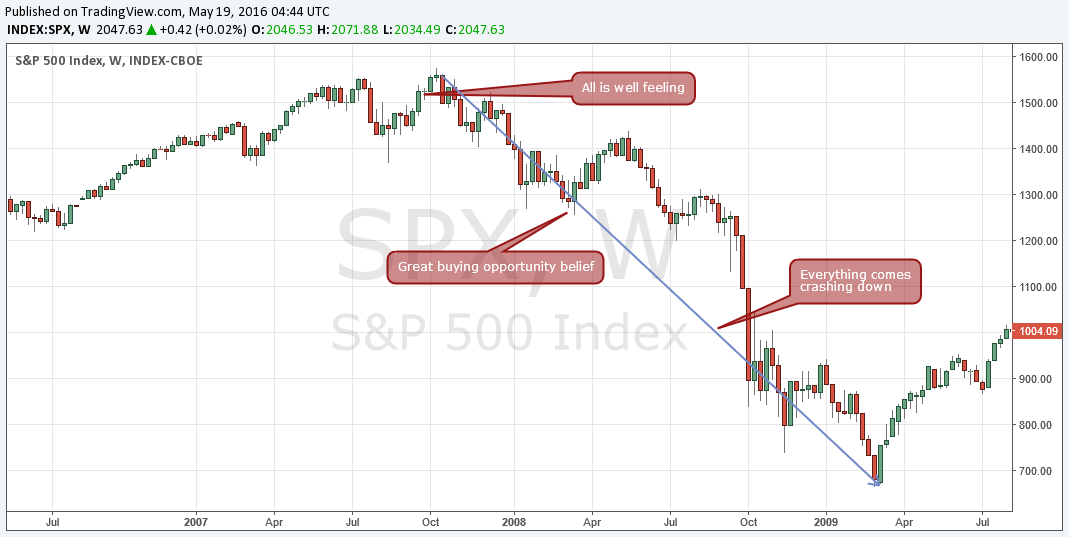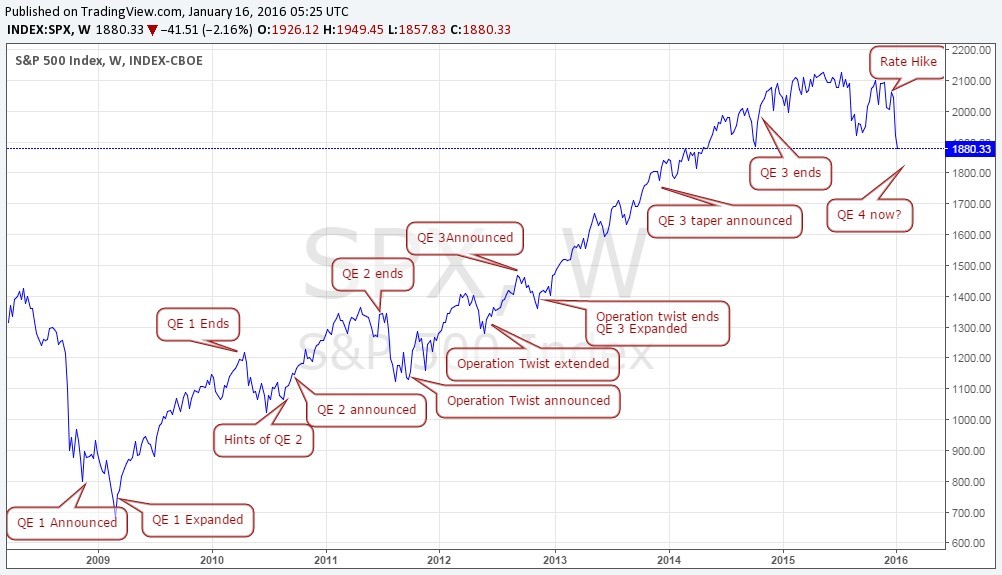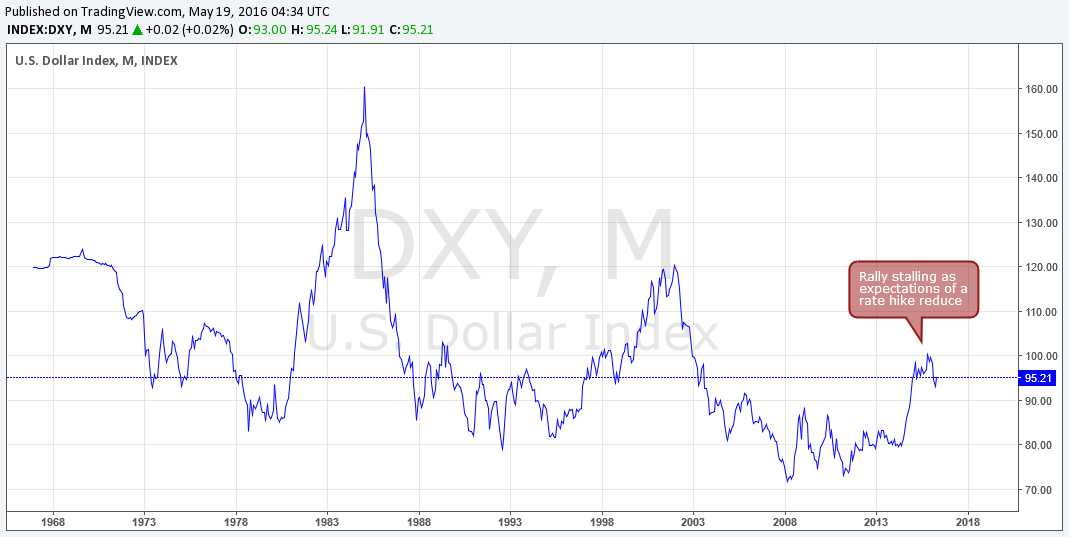Kal Kotecha PhD
Renewable energy is one of the most prominent growth sectors for personal investors to capitalize on. An increasing number of companies are focusing their strategic planning on developing revenue streams that utilize renewable energy sources in their products and services. Leading the charge in this area are companies in the technology and transportation fields, as their goods and services critically rely on efficient, highly accessible power sources for long-term sustainability considerations. Put simply, if vehicles and laptops don’t have an affordable power source they will no longer be marketable to the average consumer at a reasonable price.
One of the most important sources of renewable energy being developed to meet these future energy demands is lithium. “Lithium is a soft metal, the lightest in the periodic table, with a silvery white appearance that reacts immediately with water and air. Lithium also has the highest electrochemical potential of all metals. These properties provide very high energy and power densities for long useful life in small and comparatively lightweight packages that is driving growth in demand” (Fox-Davies Resource Specialist, 2013). Lithium has a variety of end-use applications including glass (largest market), air conditioning, medical, polymers, lubricating greases and metallurgy. The fastest growing and second-largest market for lithium globally is for use in batteries, including both rechargeable and non-rechargeable versions.
American Lithium Corporation (TSX-V: LI) (or “the Company”) is an exploration stage company located in British Columbia engaged in the acquisition, exploration and development of resource properties. With a market cap of just over $31 Million, the Company owns the rights to acquire the Fish Lake Valley Lithium Project and the Atlantis Lithium Project, both in Esmeralda County, Nevada, USA; and also owns 100% of the Reliance Gold Property in the Bridge River Gold Camp of British Columbia.
Exciting news was released today:
American Lithium Acquires 7,110 Acres over 2 Projects – Increases Nevada Lithium Brine Portfolio to over 20,000 Acres
- Addition of 4,870 acre Colorado Project to increase Fish Lake Valley lithium brine portfolio to 18,552 contiguous acres
- Addition of 2,240 Acre San Emidio Project 100 km NE of Reno – home to Tesla’s Gigafactory, to increase total Nevada lithium brine portfolio to 20,790 acres
- Company has assembled the largest contiguous land position in Fish Lake Valley, Esmeralda County, Nevada
May 24, 2016 – Vancouver, British Columbia – American Lithium Corp. (TSXV: Li) (“American Lithium” or the “Company”), is pleased to announce that it has entered into an agreement to acquire all of the outstanding share capital of 1067323 B.C. Ltd. (“1067323”), a privately held British Columbia based mineral exploration company. At the closing of the acquisition, the Company’s total Nevada lithium brine portfolio will increase to 20,790 acres (8,413 hectares), including 18,552 contiguous acres (7,508 hectares) in Fish Lake Valley, Esmeralda County, and 2,240 acres (907 hectares) in Washoe County.
1067323 holds the rights to acquire a series of 193 placer and 44 lode claims, over 4,870 acres (1971 hectares) in Fish Lake Valley, Esmeralda County, Nevada (the “Colorado Property”). Additionally, 1067323 holds the rights to acquire the San Emidio property (“San Emidio Property”), representing a series of twenty-eight (28) placer claims, over 2,240 acres (907 hectares) in Washoe County, Nevada. The Company will issue 6,000,000 common shares to acquire all of the outstanding share capital of 1067323.
American Lithium CEO, Mike Kobler commented, “In acquiring the Colorado and San Emidio properties, we have increased our Nevada portfolio of highly prospective lithium brine projects to over 20,000 acres. The acquisition of the Colorado property completes our Fish Lake Valley acquisition strategy at 18,550 contiguous acres and positions American Lithium as the dominant claim holder in this important lithium brine basin. The acquisition of the San Emidio property located in north Nevada now moves us to the next stage of our strategy as we begin to diversify our asset base by identifying and acquiring the best lithium properties in the state.” Mr. Kobler continued, “The San Emidio property was the focus of extensive exploration programs carried out over a four year period including a gravity geophysical survey completed in 2011, which indicates that an earlier discovered near surface lithium brine anomaly occurs on the west side of a basinal low. The proximity to a feature of this nature and the presence of lithium in the brines are criteria that are necessary for the formation of a Silver Peak style lithium brine deposit.”
San Emidio Project
Project generator Lithium Corporation completed exploration programs on the San Emidio property from 2009 to 2012, including sediment and brine geochemical studies, gravity geophysics, and two phases of direct push drilling. Anomalous lithium values were detected during the brine sampling program with assays ranging from trace to the highest lithium value of 81 mg/L. The gravity survey defined a basinal depression proximal to the San Emidio lithium in brine anomaly, similar to that seen in the area of the producing brine field in Clayton Valley, which is a direct analog of the San Emidio prospect. The direct push drilling confirmed the presence of lithium in the brines and outlined a lithium-in-brine anomaly approximately 1 km wide, and more than 5 km long, within which anomalous lithium enriched brines with concentrations ranging from trace up to 23.7 mg/L were encountered at depths ranging from 24 to 39 meters subsurface. As is the case at Clayton Valley, lithium concentrations in brines at San Emidio may be reasonably be expected to increase at depth.
To acquire an eighty (80%) interest in the San Emidio Property, 1067323 is required to make payments of cash and common shares, and incur exploration expenditures, as follows:
- An initial cash payment of US$100,000.
- Incurring exploration expenditures of not less than US$600,000, consisting of US$100,000 on or before the first anniversary, an additional US$200,000 on or before the second anniversary, and an additional US$300,000 on or before the third anniversary.
- Issuing 300,000 common shares of the Company, with 100,000 common shares issuable following the acquisition of 1067323, 100,000 common shares issuable on or before the first anniversary, and 100,000 common shares issuable on or before the second anniversary.
Once 1067323 has earned an eighty (80%) interest in the San Emidio Property, it can acquire the balance of the property, subject to a two-and-one-half (2.5%) percent net smelter returns royalty, through the payment of US$1,000,000.
Colorado Property
To acquire a one-hundred (100%) interest in the Colorado Property, subject to a one (1.0%) percent net smelter returns royalty, 1067323 is required make the following cash and common share payments:
- An initial cash payment of C$200,000 (paid).
- Issuing 400,000 common shares of the Company following the acquisition of 1067323.
All securities issued in connection with the acquisition of 1067323, the San Emidio Property and the Colorado Property, will be subject to a four-month-and-one-day statutory hold period. Closing of the acquisition of 1067323 remains subject to a number of conditions, including approval of the TSX Venture Exchange, and such other conditions as are customary in transactions of this nature.
Michael Collins, P.Geo. is the Company’s designated Qualified Person within the meaning of National Instrument 43-101, and has reviewed and approved the technical information contained in this news release.
For further information, contact Michael Kobler at info@americanlithiumcorp.com
ABOUT American Lithium Corp.
American Lithium Corp. is actively engaged in the acquisition, exploration and development of lithium deposits within mining-friendly jurisdictions throughout the Americas. American Lithium holds options to acquire Nevada lithium brine claims totaling 20,790 acres (8,413 hectares), including 18,552 acres (7,508 hectares) in Fish Lake Valley, Esmeralda County, and the 2,240 acre (907 hectare) San Emidio Project in Washoe County. The Company’s Fish Lake Valley lithium brine properties are located approximately 38 kilometers from Albemarle’s Silver Peak, the largest lithium operation in the U.S., approximately 3.5 hours from the Tesla Gigafactory. American Lithium is listed on the TSXV under the trading symbol “Li”. For further information, please visit the Company’s website at www.americanlithiumcorp.com.
The Company is actively engaged in the acquisition, exploration and development of strategically located lithium projects in mining-friendly jurisdictions throughout the Americas. American Lithium has positioned itself to take advantage of the growing demand for lithium. The company is looking to prove up 2-5 MM tons and with 20+k acres now – it is by far the largest lithium player in the Clayton/Esmeralda County region. Investors can expect both short and long term stock price gains as a result of three key factors which include:
- Recent property acquisition and plans for development
- Projected demand for lithium
- Pricing structure of lithium
Property Acquisition and Development
This spring-2016 saw American Lithium Corp. acquire 10,000 acres of of land titled the Fish Lake Valley land package, which includes the North and South Bowl Playas, the land package is located in a large Nevada Desert basin that exhibits similar geological and geophysical characteristics to neighboring Clayton Valley structure. Specifically, the determined geologic and structural features of American Lithium’s Fish Lake Valley property are strongly analogous to the structure and geologic settings at Albermarle Corporation’s (NYSE: ALB) Silver Peak Lithium-Brine operation housed at Clayton Valley – the only commercially producing lithium project in North America. Albermarle’s share price is valued at $76.17 as of May 17th. The proximity to Albermarle’s operation bodes well for the Company because of the positive reputation that will be projected on its own property.
American Lithium’s most recent acquisition occurred on May 9th, when the Company announced that it had entered into an agreement to acquire all of the outstanding share capital of 1065604 BC Ltd., a private British Columbia mineral exploration company that held a right to acquire a series of 69 placer claims and 19 association placer claims, comprising a total of 2,882 acres, located in Esmeralda County, Nevada, and known as the Atlantis Property. This acquisition effectively enabled the Company to own the sum of the key structures of the South and North Bowl Playas, which contain the lithium brines, and where gravity data shows distinct gravity lows. Brine is by far the easiest and lowest cost type of lithium resource to process (compared to rocks and clays), generally easier to explore, has a small environmental footprint, is faster to put into production, and requires less capital. (Mining Market Watch Journal, 2016).
The property has proven to contain economically significant lithium, boron and potassium brine mineralization. Of importance is that there is near total absence of magnesium in the brines, which is excellent as high levels of magnesium are problematic (costs go up significantly) when it comes to a production scenario due to its similarity to lithium. (Market Equities Research Group, 2016).

Source – American Lithium Corp., 2016
The acquisition of the Atlantis Property saw American Lithium’s share price increase by $0.13 from $1.12 on May 6 (previous trading day) to $1.25 on May 9. This fact is what drives my projection that the Company has excellent near term potential for increases to its current share price of $1.05. American Lithium has outlined their exploration and development plan, which includes a follow through exploration and development program in the range of US$1 million – $1.5 million to focus on structures and sweet spots. The Company plans to build 5 to 6.5 kilometers of road deeper into the property and will conduct additional ground gravity surveys along with a sonic drill program to obtain geological samples from basin sediments in a cost effective way. The exploration and development plan is expected to be implanted in the summer of 2016, at which point investors can expect another surge in the Company’s share price. Those investors who capitalize now while the share is undervalued should not be surprised to see the stock’s price rise to the $2.00 region once the program is implemented and survey results are shared – similar to how the market reacted to the Company’s recent acquisition, but on a larger scale.
Growth in Lithium Demand
As noted in an article published in the January edition of The Economist, lithium is a vital component of batteries that power everything from cars to smartphones, laptops and power tools. With demand for such high-density energy storage set to surge as vehicles become greener and electricity becomes cleaner, Goldman Sachs, an investment bank, calls lithium “the new gasoline”. (The Economist, 2016).
Fox-Davies provides us with a projected demand forecast for lithium applications ranging between 2011 and 2015:

Source: Fox Davies, 2013
With such significant demand being expected in the medium and long term, governments and private entities will show a desire to have easy access to lithium from domestic sources to avoid potential supply change issues. Albermarle’s Silver Peak Lithium-Brine operation hosting the only commercially producing lithium project in North America will no long be sufficient. The trend, I project, is that major resource companies will seek out junior mining companies holding high inferred resource properties and will purchase them. American Lithium falls directly into this category and is working to develop its lithium property at a prime time for a potential buy out in the medium term, thus driving its stock price even higher.

Source: American Lithium Corp., 2016
Pricing Structure
Now, an interesting component of lithium and its value to investors is the fact that there is no commodity market for lithium products (like those for copper or silver), and prices are effectively set by negotiation between producers and customers based on the customer’s needs and price trends (Mining Market Watch Journal, 2016). For investors, this means that in order to take advantage of the rocket potential housed in lithium, they should invest in companies that develop or market lithium to end users.
Lithium is currently experiencing a price surge driven by two key players: China and Tesla.
Lithium prices in China have risen from about $7,000 a tonne to over $20,000 recently, according to research by consultants CRU, while industry website Asian Metal says lithium carbonate, the compound used in batteries, has jumped by 76 percent in the past 12 months (Reuters, 2016).
Tesla produced less than 50,000 cars in 2015, however that is about to change as it ramps up to produce a more mass-market Model 3, which already has nearly 400,000 pre-orders and according to Benchmark Mineral Intelligence when that number hit 325,000 pre-orders (within a week after launch) the firm calculated that number alone will increase demand for lithium hydroxide by 20-30%. (Mining Market Watch, 2016). Tesla’s production of the Model 3 will genuinely effect the total available supply of lithium in the next two years, and companies like American Lithium will become valuable as a North American source of lithium production. The surging demand and (likely) lagging supply will continue to drive the price of lithium upward in the coming years. Investors seeking to benefit from the forthcoming lithium price and demand surge would be wise to invest in equities such as American Lithium, whose stock will rise complementary to the rising price of lithium.
American Lithium Corporation – Summary
American Lithium (TSX-V: LI) is positioned in a market that is seeing clear, upward trending demand from both private and public entities. The Company has the potential to see its stock price increase markedly in the short-term if it continues to reach its acquisition, property development and fundraising goals. The Company is headed by its CEO Michael Kobler, P.Eng, along with a very experienced management team whose members successfully built a major oil sands company (Osum Oil Sands Corp.) from inception to over $2 billion in equity value. With this kind of experience, investors should feel confident in their ability to manage the high potential and positive lithium market by actualizing American Lithium’s potential by increasing its stock price to a point that is legitimately valuable for its early shareholders.
Happy Investing!
Kal Kotecha PhD
Works Cited
“American Lithium Corp. Executing Large-Scale Strategy With Goal of Becoming Largest Resource Holder in Nevada.” Mining Market Wath (2016). Web. 17 May 2016 <http://miningmarketwatch.net/li.htm>
“American Lithium Corp. (TSX-V: LI) Upside Share Price Revaluation in Order.” Market Equities Research. 16 May 2016. Web. 17 May 2016 < http://marketequitiesresearch.com/report-li-0516.htm>
“American Lithium Corp.” TMXmoney. N.p., n.d. Web. 17 May 2016. http://web.tmxmoney.com/quote.php?qm_symbol=LI
“An Increasingly Precious Metal.” The Economist. The Economist Newspaper, 16 Jan. 2016. Web. 17 May 2016. < http://www.economist.com/news/business/21688386-amid-surge-demand-rechargeable-batteries-companies-are-scrambling-supplies>
“Lithium – the commodity winner you can’t buy.” Russell, Clyde. Reuters. Thomson Reuters, 12 May 2016. Web 17 May 2016. < http://www.reuters.com/article/column-russell-lithium-idUSL3N189152>
“The Lithium Market.” Fox Davies – Resource Specialists (2013): 1-15. Web. 17 May 2016. <http://www.globalstrategicmetalsnl.com/_content/documents/405.pdf>
Disclaimer
© 2010 Junior Gold Report
Junior Gold Report’ Newsletter: Junior Gold Report’s Newsletter is published as a copyright publication of Junior Gold Report (JGR). No Guarantee as to Content: Although JGR attempts to research thoroughly and present information based on sources we believe to be reliable, there are no guarantees as to the accuracy or completeness of the information contained herein. Any statements expressed are subject to change without notice. JGR, its associates, authors, and affiliates are not responsible for errors or omissions. Consideration for Services: JGR, it’s editor, affiliates, associates, partners, family members, or contractors may have an interest or position in featured, written-up companies, as well as sponsored companies which compensate JGR. JGR has been paid by the company written up. Thus, multiple conflicts of interests exist. Therefore, information provided herewithin should not be construed as a financial analysis but rather as an advertisement. The author’s views and opinions regarding the companies featured in reports are his own views and are based on information that he has researched independently and has received, which the author assumes to be reliable. No Offer to Sell Securities: JGR is not a registered investment advisor. JGR is intended for informational, educational and research purposes only. It is not to be considered as investment advice. Subscribers are encouraged to conduct their own research and due diligence, and consult with their own independent financial and tax advisors with respect to any investment opportunity. No statement or expression of any opinions contained in this report constitutes an offer to buy or sell the shares of the companies mentioned herein. Links: JGR may contain links to related websites for stock quotes, charts, etc. JGR is not responsible for the content of or the privacy practices of these sites. Release of Liability: By reading JGR, you agree to hold Junior Gold Report its associates, sponsors, affiliates, and partners harmless and to completely release them from any and all liabilities due to any and all losses, damages, or injuries (financial or otherwise) that may be incurred.
Forward Looking Statements
Except for statements of historical fact, certain information contained herein constitutes forward-looking statements. Forward looking statements are usually identified by our use of certain terminology, including “will”, “believes”, “may”, “expects”, “should”, “seeks”, “anticipates”, “has potential to”, or “intends’ or by discussions of strategy, forward looking numbers or intentions. Such forward-looking statements involve known and unknown risks, uncertainties and other factors which may cause our actual results or achievements to be materially different from any future results or achievements expressed or implied by such forward-looking statements. Forward-looking statements are statements that are not historical facts, and include but are not limited to, estimates and their underlying assumptions; statements regarding plans, objectives and expectations with respect to the effectiveness of the Company’s business model; future operations, products and services; the impact of regulatory initiatives on the Company’s operations; the size of and opportunities related to the market for the Company’s products; general industry and macroeconomic growth rates; expectations related to possible joint and/or strategic ventures and statements regarding future performance. Junior Gold Report does not take responsibility for accuracy of forward looking statements and advises the reader to perform own due diligence on forward looking numbers or statements.

















